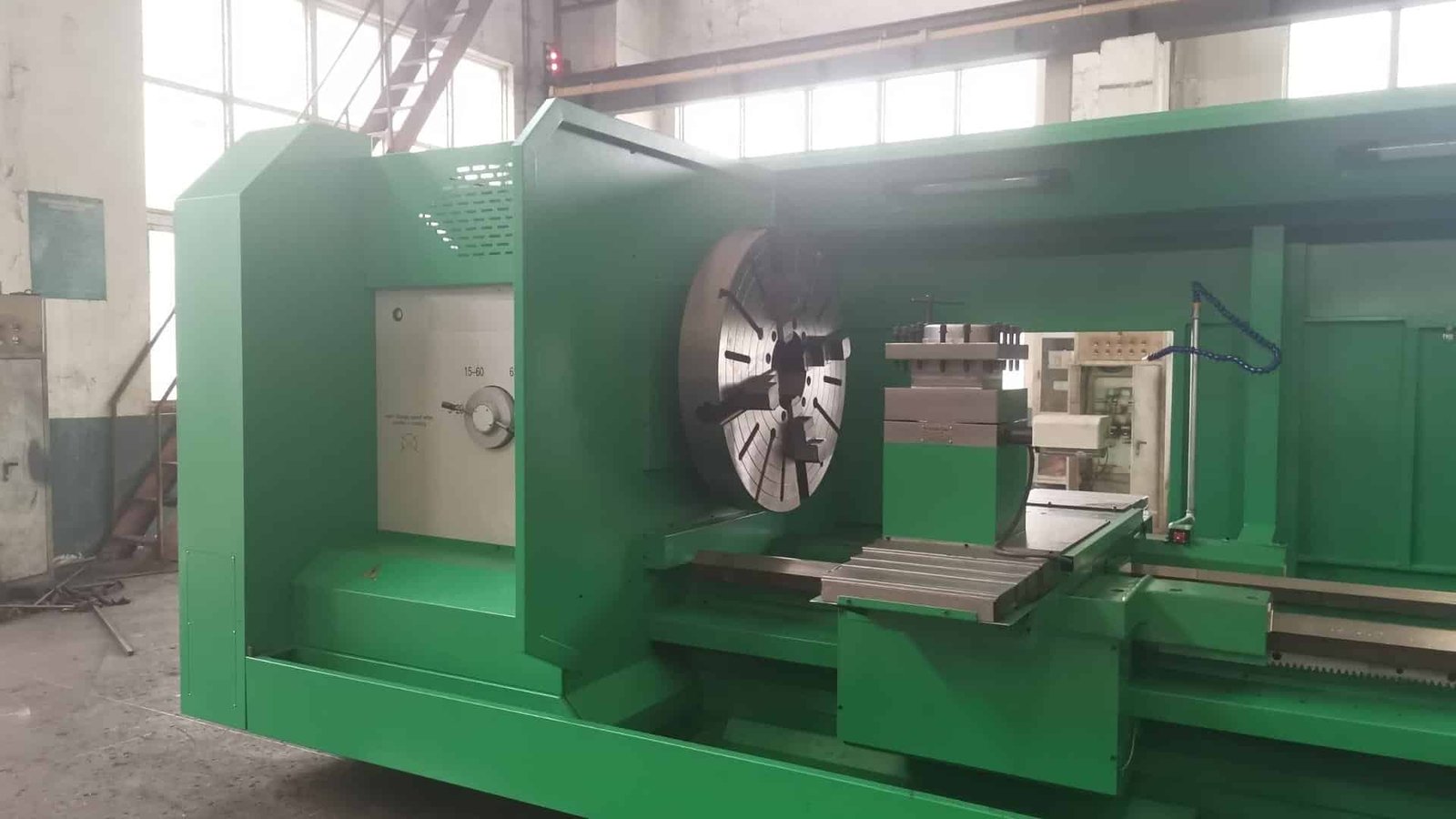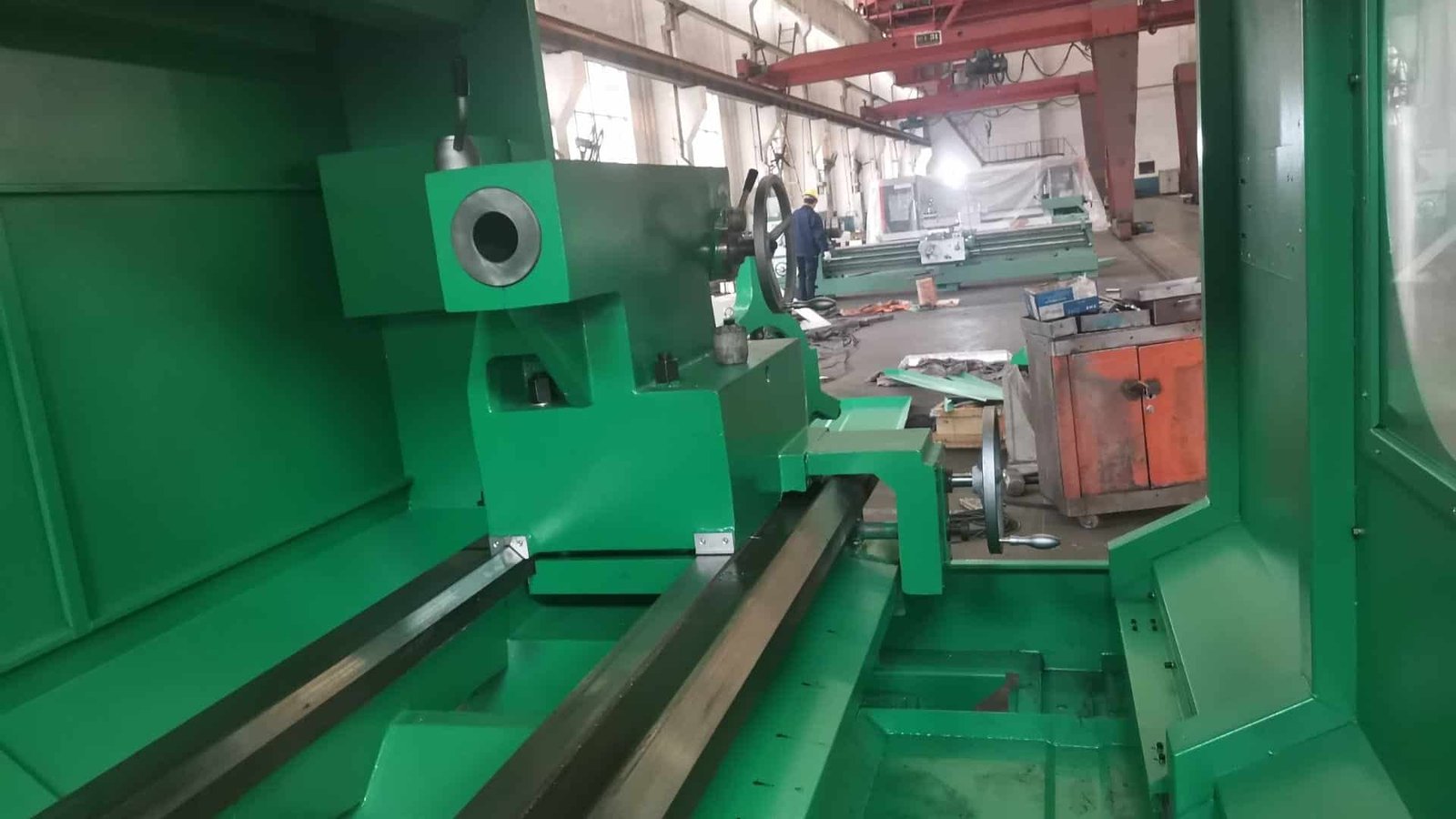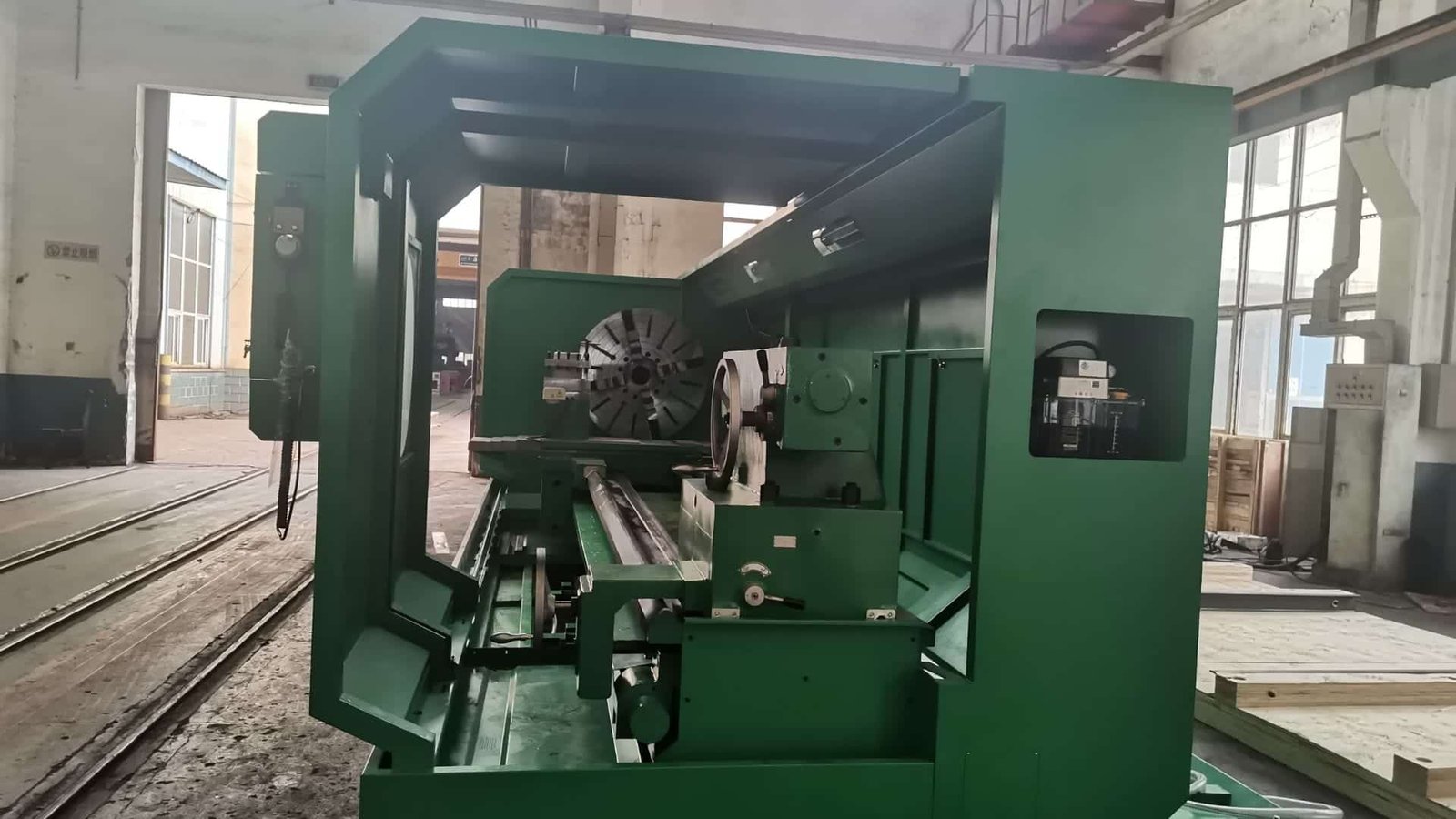What Are Structural and Mechanical Differences of Heavy-Duty and Standard CNC lathes?

Chris Lu
Leveraging over a decade of hands-on experience in the machine tool industry, particularly with CNC machines, I'm here to help. Whether you have questions sparked by this post, need guidance on selecting the right equipment (CNC or conventional), are exploring custom machine solutions, or are ready to discuss a purchase, don't hesitate to CONTACT Me. Let's find the perfect machine tool for your needs.

Chris Lu
Leveraging over a decade of hands-on experience in the machine tool industry, particularly with CNC machines, I'm here to help. Whether you have questions sparked by this post, need guidance on selecting the right equipment (CNC or conventional), are exploring custom machine solutions, or are ready to discuss a purchase, don't hesitate to CONTACT Me. Let's find the perfect machine tool for your needs
Choosing the right CNC lathe feels overwhelming, right? You know you need precision, but what if your jobs involve massive parts or super tough materials? Making the wrong choice costs time and money.
Heavy-duty CNC lathes are built with larger, more rigid structures, higher torque spindles, and more robust components than standard CNC lathes. This makes them suitable for machining large, heavy workpieces and performing aggressive cutting operations that standard lathes cannot handle.

It’s not just about size; it’s about fundamental design differences that dictate what kind of work each machine excels at. We’re going to break down these structural and mechanical distinctions, looking at everything from the bed and spindle to maintenance and when you should seriously consider investing in a heavy-duty beast.
How Do Spindle Power and Torque Differ, Impacting Heavy-Duty and Standard CNC Lathes?
Is more spindle power always better? Not necessarily. The real story for heavy-duty work often lies in torque, and how these two factors are balanced determines a lathe’s true cutting capability for different tasks.
Heavy-duty CNC lathes prioritize high torque at lower speeds, backed by substantial power, for effectively cutting large, tough materials. Standard CNC lathes often focus on higher spindle speeds with moderate torque and power for precision and faster machining of smaller parts.

Matching the spindle characteristics to the job is crucial. For a heavy-duty CNC lathe, the spindle system is engineered for serious power. We’re talking about large spindle diameters and heavy-duty bearings built to withstand immense cutting forces. The motors are designed for high torque, sometimes reaching several thousand Newton-meters, especially at lower RPMs. This raw twisting power is essential when you’re taking deep cuts on large diameter workpieces or machining challenging alloys. Some heavy-duty machines can have spindle motors1 offering power in the range of 30 kW to 55 kW (around 40 to 74 horsepower), or even more, to support these demanding operations. Sophisticated cooling systems, like oil cooling or forced lubrication, are common to manage the heat from sustained heavy cutting.
A standard CNC lathe, in contrast, usually has a spindle built for a balance of speed and precision. The spindle motor might be smaller, often in the range of 5.5 kW for milling drives on some combination lathes, and is optimized for higher RPMs. This is beneficial for achieving good surface finishes on smaller components and for materials that machine well at higher speeds. While they need adequate torque for their intended tasks, it’s not the primary design focus as it is with heavy-duty machines. Their heat dissipation and lubrication systems are generally simpler. The choice depends on the material too; high-strength alloys demand high torque, while softer materials like aluminum can be machined efficiently at high speeds with lower torque, making certain spindle configurations more economical.
How Do Heavy-Duty CNC Lathe Bed and Guide Ways Enhance Rigidity and Dampen Vibration?
Ever seen a lathe shake under a heavy cut? That’s often a sign of insufficient rigidity. The bed and guideways are the backbone, and their design is dramatically different when comparing heavy-duty to standard machines, directly impacting performance.
Heavy-duty CNC lathe beds utilize massive, often one-piece, reinforced castings and wide, hardened guideways. This robust construction provides superior rigidity to absorb cutting forces and effectively dampen vibrations, which is critical for maintaining accuracy with heavy workpieces and during aggressive machining.

The foundation of any good lathe is its bed, and for heavy-duty CNC lathes2, this is where a major difference lies. These beds are significantly larger and heavier. They are often made from high-quality materials like dense cast iron, sometimes using special molding processes for high density and excellent vibration damping qualities. The design often features an integrated, one-piece casting or a heavily reinforced internal rib structure, sometimes with double-wall designs for maximum stability and resistance to heat distortion. The guiding principle is "rigidity first." The guideways are another critical component. They are substantially wider, sometimes employing dual guideways, and are typically hardened and precision-ground to withstand huge loads and resist wear. Some advanced designs might use specialized systems like hydrostatic lubrication on the guideways to further reduce friction and enhance stability under extreme loads. Inclined guideways, perhaps at 30° or 45°, are also common as they improve chip evacuation and optimize force distribution, boosting overall rigidity.
In contrast, a standard CNC lathe3 will have a lighter bed structure, often using standard cast iron or welded steel. The guideways are smaller in width, and the overall machine footprint is more compact. They frequently use linear guideways or medium-sized hard guideways that are perfectly suitable for the small to medium-sized workpieces they are designed for. The rigidity is moderate, sufficient for general machining tasks, but it wouldn’t cope as well with the extreme forces generated when turning, for example, a multi-ton forging. The focus for standard lathes is often a balance of rigidity, speed, and cost-effectiveness, rather than the absolute maximal rigidity and damping needed for true heavy-duty applications.
What Are the Unique Maintenance and Operational Requirements for Heavy-Duty CNC lathes?
Think maintaining a heavy-duty lathe is just like a standard one, only bigger? While some principles overlap, the scale, complexity, and sheer power of heavy-duty machines bring unique demands for upkeep and daily operation to ensure their longevity and peak performance.
Heavy-duty CNC lathes demand more rigorous and specialized maintenance schedules, including detailed checks of lubrication, air, and hydraulic systems, diligent chip management, and careful monitoring of larger components. They also often require more skilled operators and potentially additional support equipment.

Neglecting maintenance on any machine is asking for trouble, but with a heavy-duty CNC lathe4, the stakes are higher due to the significant investment and the critical nature of the work they often perform. Their maintenance routines are generally more involved. The lubrication system5, for example, is often more complex, requiring regular checks and replacement of different specific lubricants for various parts – extreme pressure grease for axes, special oil for the spindle cylinder, and so on. Oil pumps and filters need consistent attention. Since these machines often use pneumatic systems for tool changers or tailstocks, air source management6 is vital; this includes regularly draining water from air systems to prevent component rust and malfunction.
Chip removal is a bigger challenge due to the high material removal rates. Excessive accumulation can lead to switch failures or damage if chips enter sensitive areas like the spindle cavity. Hydraulic and pneumatic systems require regular pressure and temperature checks, filter replacements, and ensuring air dryers function correctly. Given the forces involved, regularly checking and adjusting transmission chain clearances is crucial for maintaining positioning accuracy. The electrical system, often housed in larger cabinets, needs to be kept clean and well-ventilated, with attention to backup batteries. Coolant systems can be more advanced, sometimes with higher pressure options, and require consistent monitoring. Regular calibration and alignment are also critical to maintain precision over time. Finally, safety protection devices need constant verification. Operators often need more specialized skills for setup, programming, and handling large workpieces, which might also require additional equipment like cranes.
When Should You Invest in a Heavy-Duty CNC Lathe Instead of a Standard CNC Lathe?
Is a heavy-duty CNC lathe an unnecessary extravagance or a vital investment for your shop’s future? Making this critical decision hinges on a clear-eyed assessment of your current and, importantly, future machining needs, as their capabilities and costs differ significantly.
Invest in a heavy-duty CNC lathe when your work consistently involves machining large, heavy parts, requires high power and torque for tough materials or aggressive roughing, demands exceptional stability for continuous high-volume production, or involves complex, high-value components where precision under extreme load is non-negotiable.

From my experience, stepping up to a heavy-duty CNC lathe isn’t a decision to take lightly, but it becomes not just beneficial but essential in certain scenarios. Here’s when I would strongly consider making that investment for my shop:
- Processing Consistently Large and Heavy Workpieces: If your typical jobs involve parts that are routinely longer than 2 meters, have diameters exceeding 400mm, or weigh from several hundred kilograms up to several tons, a standard lathe simply won’t have the necessary load capacity, swing, or structural integrity. Think about machining wind power main shafts, large industrial rollers, heavy-duty pipe fittings, or components for the oil and gas industry.
- High Cutting Force and Power Requirements: When your daily operations include significant rough machining, heavy-duty cutting (taking deep, aggressive cuts in tough materials like high-strength alloys7), or demanding deep hole machining, you need the superior torque and bed rigidity that a heavy-duty lathe provides. This prevents vibrations, ensures tool life, and maintains accuracy under intense strain.
- Continuous, High-Volume Production of Robust Parts: Heavy-duty lathes are engineered for high-intensity, long-duration continuous operation, common in industries like shipbuilding or power plant component manufacturing. Their inherently robust structures, wear-resistant guideways, and powerful components are designed to minimize downtime and reduce maintenance frequency, ensuring greater operational stability in demanding production environments.
- Machining Complex, High-Value Structural Parts: If you’re manufacturing workpieces that have intricate shapes (like large stepped shafts or components with critical flanged end faces) or are complex welded assemblies, the enhanced stability and support from a heavy-duty lathe are invaluable. This is especially true in sectors like aerospace or heavy machinery, where precision and reliability on expensive components are paramount.
- Need for Wide Machining Tolerances but High Process Stability: Sometimes, the end-product doesn’t demand sub-micron precision, but what’s absolutely critical is "dimensional consistency8" across many parts and the "strength to withstand rough machining" without deviation or premature wear. For these applications, a heavy-duty lathe performs far more stably than a standard machine.
It really boils down to matching the machine’s inherent capability to the relentless demands of the job. If your work consistently falls into these categories, a heavy-duty CNC lathe moves from being a luxury to a necessary and ultimately profitable cornerstone of your operations.
Conclusion
Heavy-duty CNC lathes offer superior rigidity, power, and capacity for large, demanding jobs. Standard lathes suit smaller, general tasks. Understanding these core differences ensures you select the right machine effectively.
-
Learn about spindle motors and their role in CNC machines to optimize your machining processes and improve efficiency. ↩
-
Explore the advantages of heavy-duty CNC lathes to understand their superior performance and durability for demanding machining tasks. ↩
-
Learn about the differences between standard and heavy-duty CNC lathes to make informed decisions for your machining needs. ↩
-
Understanding the maintenance needs of a heavy-duty CNC lathe can help you protect your investment and ensure optimal performance. ↩
-
Exploring how lubrication systems function can enhance your knowledge of machine maintenance and efficiency. ↩
-
Learning about air source management is essential for preventing rust and ensuring the longevity of your CNC equipment. ↩
-
Discover the properties and uses of high-strength alloys to see how they can benefit your machining projects and enhance product performance. ↩
-
Learn why dimensional consistency is crucial for quality assurance and how it impacts production efficiency and product reliability. ↩
